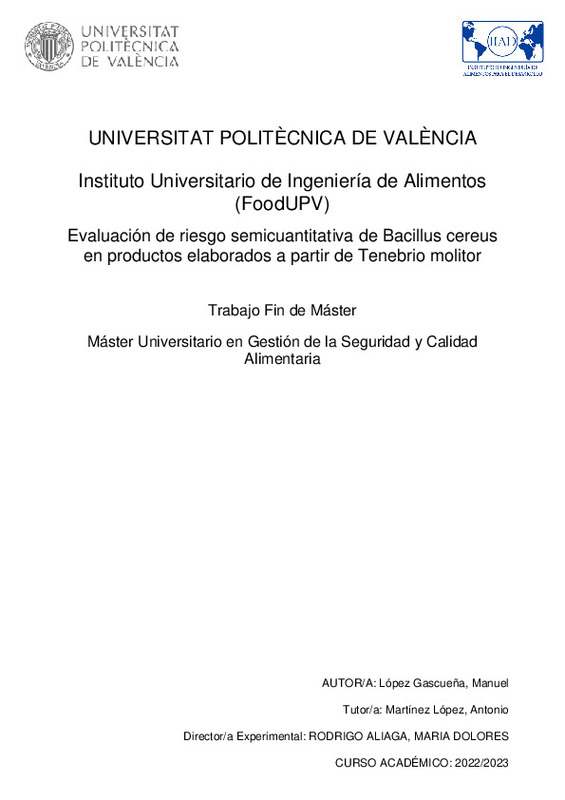|
Resumen:
|
[ES] La situación social, medioambiental y económica ha cambiado significativamente en un periodo corto de años. Esta situación resulta cada vez más alarmante debido al crecimiento continuo de la población mundial. En ...[+]
[ES] La situación social, medioambiental y económica ha cambiado significativamente en un periodo corto de años. Esta situación resulta cada vez más alarmante debido al crecimiento continuo de la población mundial. En consecuencia, se han buscado alternativas para el aporte proteico de ciertos alimentos especialmente los alimentos cárnicos y sus derivados. La incorporación de los insectos comestibles a las dietas occidentales se enmarca como una de esas alternativas. Puesto que tradicionalmente se ha practicado la entomofagia en diversos lugares del mundo, esta opción parece viable. Los insectos y los productos que los contienen pueden suponer una opción adicional a los productos cárnicos por su alto valor proteico y por los beneficios de sostenibilidad ambiental que representa su producción. Por ello, resulta de especial interés el objeto de este trabajo: estudiar cuales son los posibles peligros que pueden representar los insectos comestibles y estimar el riesgo que puede llegar a suponer el consumo de estos productos en relación con el Bacillus cereus como patógeno alimentario. El resultado del estudio indica que el producto que implica un mayor riesgo para el consumidor es el análogo cárnico con un 46%, seguido de las tortillas con un 42% y de la barrita proteica con un 36%. Los resultados también indican que, en el caso de un fallo en la cadena de producción y distribución desde la granja a la mesa, el número de enfermos por 100000 habitantes sería inferior al ocasionado por Salmonella que se estima en 60 cada 100000 habitantes año. Este trabajo se encuentra relacionado con los siguientes Objetivos de Desarrollo Sostenible (ODS) de la Agenda 2030: ODS 2 Hambre cero; ODS 3 Salud y bienestar; ODS 9 Industria, innovación e infraestructura; ODS 13 Acción por el clima y ODS 15 Vida de ecosistemas terrestres.
[-]
[EN] The social, environmental and economic situation has changed significantly in a short period of years. This situation is increasingly alarming due to the continuous growth of the world population. Consequently, ...[+]
[EN] The social, environmental and economic situation has changed significantly in a short period of years. This situation is increasingly alarming due to the continuous growth of the world population. Consequently, alternatives have been sought for the protein intake of certain foods, especially meat foods and their derivatives. The incorporation of edible insects into Western diets is framed as one of those alternatives. Since entomophagy has traditionally been practiced in various parts of the world, this option seems viable. Insects and the products that contain them can be an additional option to meat products due to their high protein value and the benefits of environmental sustainability that their production represents. For this reason, the object of this work is of special interest: to study the possible dangers that edible insects can represent and to estimate the risk that the consumption of these products may entail in relation to Bacillus cereus as a food pathogen. The result of the study indicates that the product that implies the greatest risk for the consumer is the meat analogue with 46%, followed by tortillas with 42% and the protein bar with 36%. The results also indicate that in the case of a failure in the production and distribution chain from farm to fork, the number of sick people per 100,000 inhabitants would be lower than that caused by Salmonella, which is estimated at 60 per 100,000 inhabitants per year. This work is related to the following Sustainable Development Goals (SDG) of the 2030 Agenda: SDG 2 Zero Hunger; SDG 3 Health and well-being; SDG 9 Industry, innovation and infrastructure; SDG 13 Climate Action and SDG 15 Life on Land.
[-]
|







